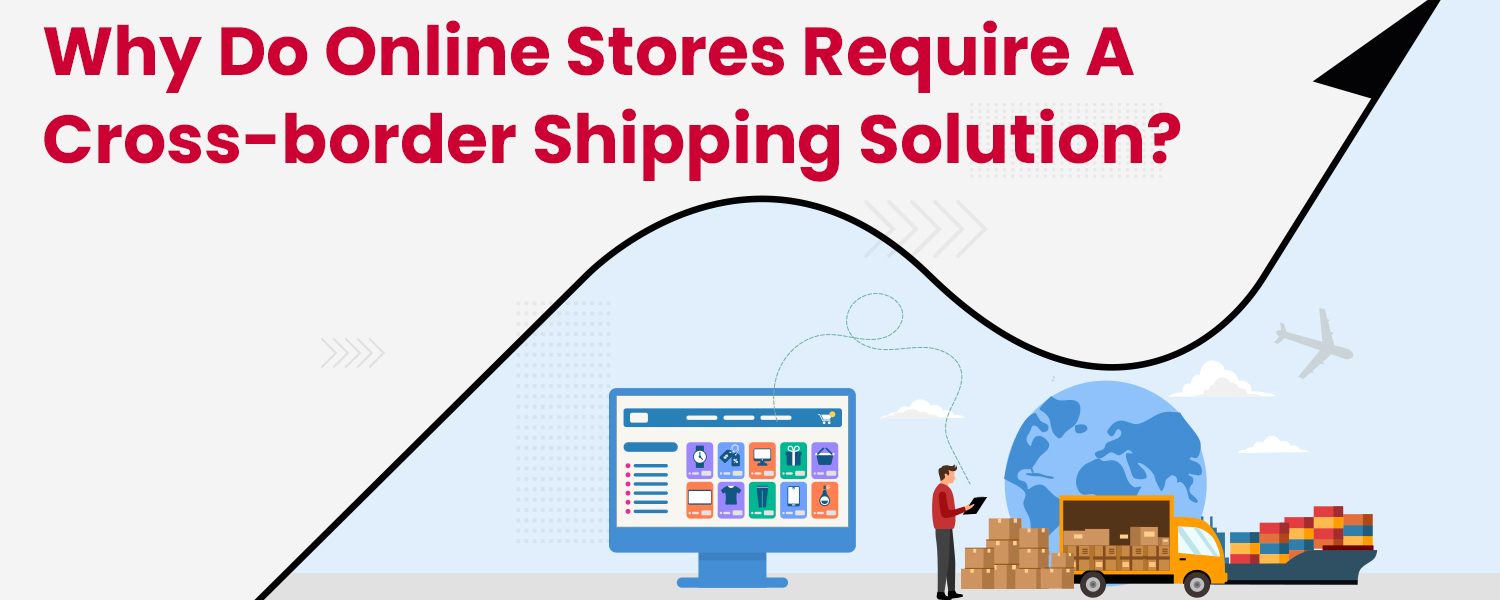Cross-border shipping is when goods are transported from one country to another, with no inventory being stored in the destination country. Let’s dive deep into Cross border eCommerce and know the reasons why every online store should implement cross-border shipping solutions.
What is Cross-border eCommerce?
Cross-border eCommerce is the practice of trading online beyond a country’s geographical boundaries. It may happen between
- a business and a consumer (B2C)
- two businesses (B2B) or
- two private persons (C2C)
The goods will go through customs and import duties may have to be paid depending on the existing trade agreements. In the case of cross-border eCommerce, cross-border shipping only needs to occur when a cross border transaction has been made.
Reasons to Implement Cross-Border Shipping Solutions
1. Change in Consumers’ Buying Behaviour
Though Cross-border eCommerce has been continuously evolving over the last two and half decades, in the last two years, it has gained huge momentum because of changes in customers’ purchasing habits. Most of the customers prefer buying and shipping products from other countries. There are many reasons for it, the biggest one being – it’s cheaper to buy a product directly from its source of origin.
2. The Rise in Cross-border Purchases Around the World
With a global market base of more than 2 billion online shoppers, eCommerce is one of the fastest-growing business sectors globally. The income levels of the consumers are also on the rise and with this increased income, the demand for imported goods has also been increasing. The number of consumers who are using their spending power to buy internationally is increasing. One research by Bloomberg says that the total worth of China’s cross-border eCommerce business is $60 billion. In France as well, Cross border purchases have been growing at a very fast pace. Nearly 50% of all French consumers started buying from cross-border merchants.
Statista, in its recent survey, interviewed US shoppers and found out that 27% shop both within and cross-border while for Austrian Shoppers, the number increased to 71%. A 2020 study by UPS found that 83% of shoppers in Canada, 81% of shoppers in Brazil, and 78% in Mexico have bought from eCommerce stores in other countries as well. In the USA, nearly half (47%) of all shoppers had purchased from stores outside of the country. The stats are clear indications of why a cross-border shipping solution is critical for online stores.
3. Reduce Investment and Inventory Exposure
As an alternative to cross-border shipping, creating a traditional local distribution model involves setting up warehouses and managing fleets to manage deliveries in the destination country. Often, this is done to reduce shipping times, as the inventory is kept closer to the country. However, creating your own local distribution model requires a lot of initial investment. Setting up and maintaining overseas offices, import licenses, and warehouses to handle your inventory is an expensive investment. Further, holding on to inventory at any given moment involves certain inventory exposure risk, which comes from inventory storage costs, spoilage costs, and obsolescence.
With the cross-border shipping model, your inventory exposure shall come down significantly. It will not be as high as a local distribution model if you run a centralized logistics model. On top of that, shipping costs are only incurred when sales have been made by using a cross-border shipping model. Hence, you will have guaranteed revenue on each product that you ship to the target country. This makes cross-border shipping a cheaper and more flexible logistics option when initially entering new markets.
4. Faster Deployment
Using a local distribution model involves a high amount of initial lead time. Finding, setting up, and maintaining an ideal warehouse in a foreign country can be a significant headache. You would need to visit the country personally or render the services of a broker, both of which are tedious and expensive. On top of that, you’ll need to negotiate the lease terms and hire staff to station at the warehouse. You’d also need to pay for the necessary licenses and permits to operate within the new country. In a few countries like Indonesia, it may take around 6 months before you obtain your import license which is compulsory for a local distribution model. Further, more time is needed to establish teams, warehouses, and fleets. This slower time-to-market could cost you potential sales.
The cross-border shipping model eliminates all the above and lets you enter the global market almost instantaneously. Existing and established cross-border shipping partners have the required logistical infrastructure, licenses, and expertise already in place. This will reduce your logistics set-up time to that of researching the right partners and registering with them, improving the time-to-market for your products which is the key to success in this fast-paced environment and ever-evolving market.
5. Geographical Reach
Expanding an eCommerce business globally beyond the domestic market is a very big challenge. Shipping your products from global logistical hubs eliminates these challenges and paves the way for a smooth and flawless geographical expansion strategy by leveraging a centralized logistical hub that is close to your customer. Your goods can reach even rural parts of various target countries by using the cross-border shipping service, depending on your fulfilment partner’s network. You will have access to multiple countries with a relatively short set-up time by registering with the right partner.
6. Test Demands in the New Markets
Starting your cross-border business without knowing the existing trend and demands of the local people living in the country would be a huge mistake. Investing in market research will help your business grow. It is very crucial to Identify whether people in other countries will buy your product before you start expanding your business cross-border. This cost is quite high with the local distribution model. However, with the cross-border shipping model’s lower initial investment, faster time-to-market, and potential geographical reach, it offers a flexible and effective way of serving the region. As a result, cross-border shipping is much more suitable and viable for testing demand in the market compared to using a traditional local distribution model.
Conclusion
When choosing a cross-border shipping solution, it’s important to consider factors such as cost, delivery time, tracking and transparency, and customer service.
If you’re ready to start using a cross-border shipping solution for your online store, we can help . We offer competitive rates and a range of cross-border shipping services to suit your needs. Contact NimbusPost today to get started.




